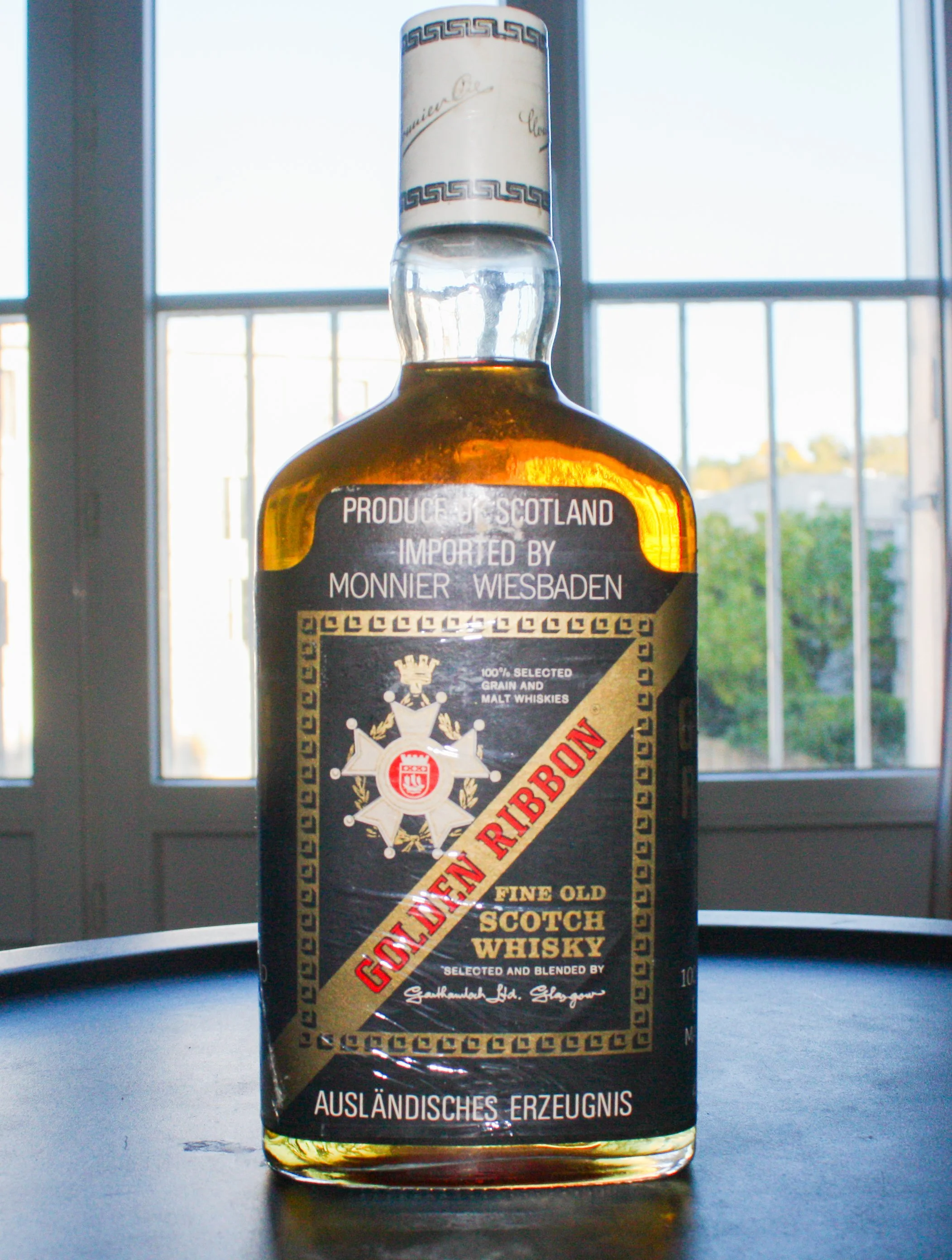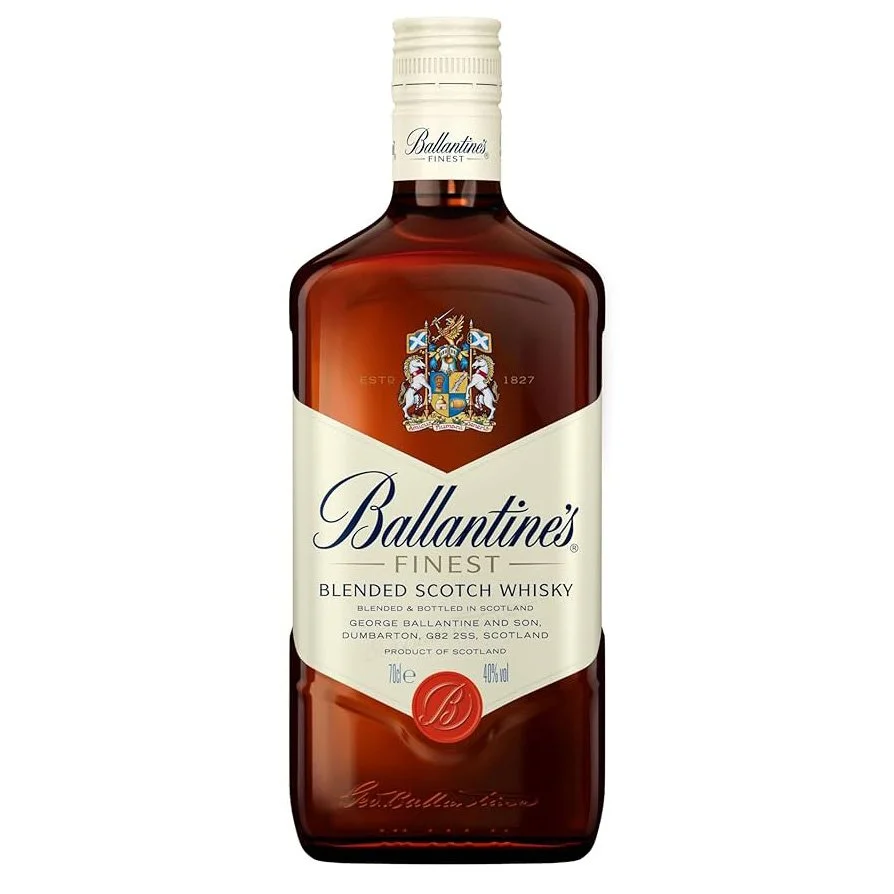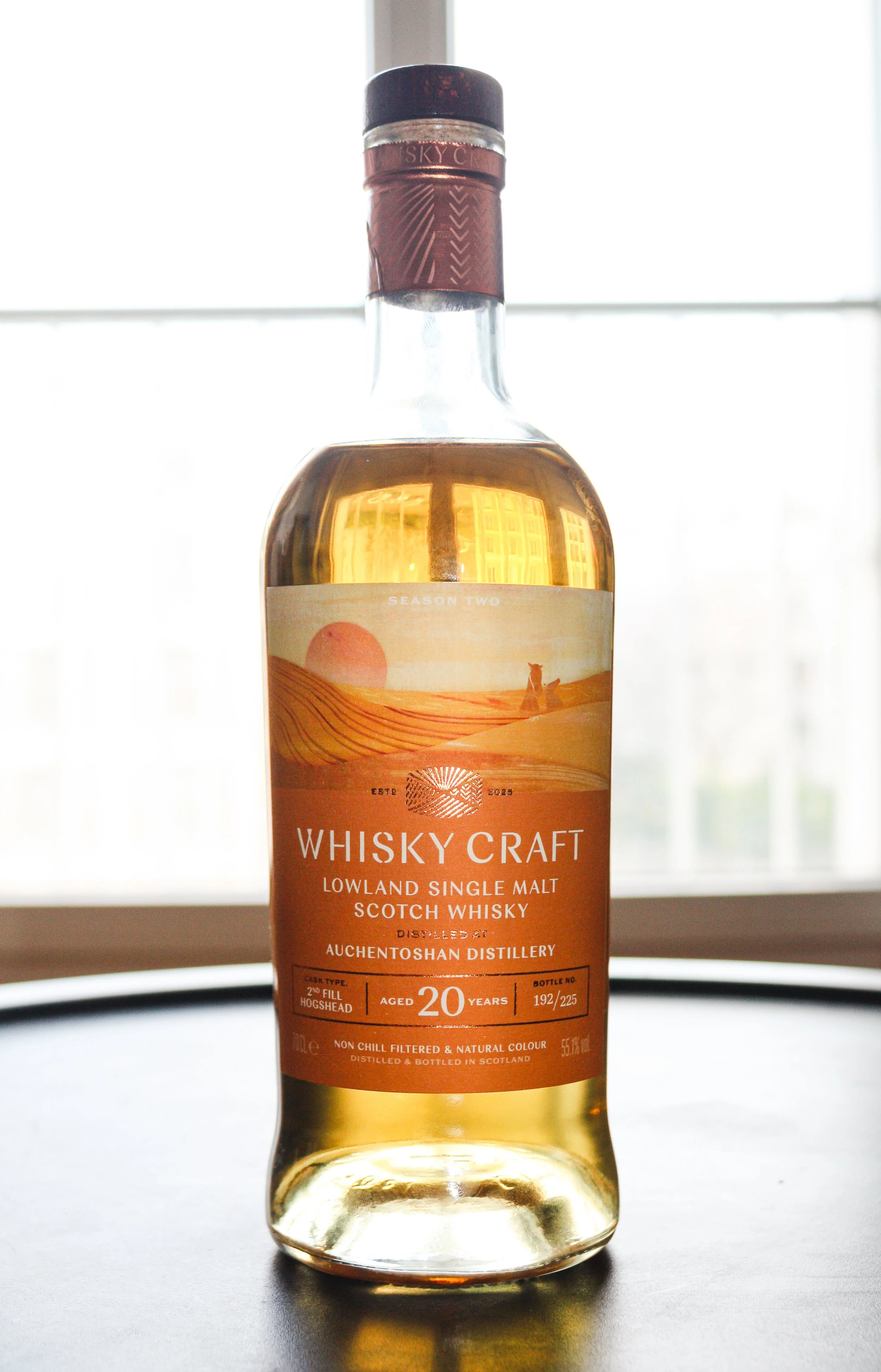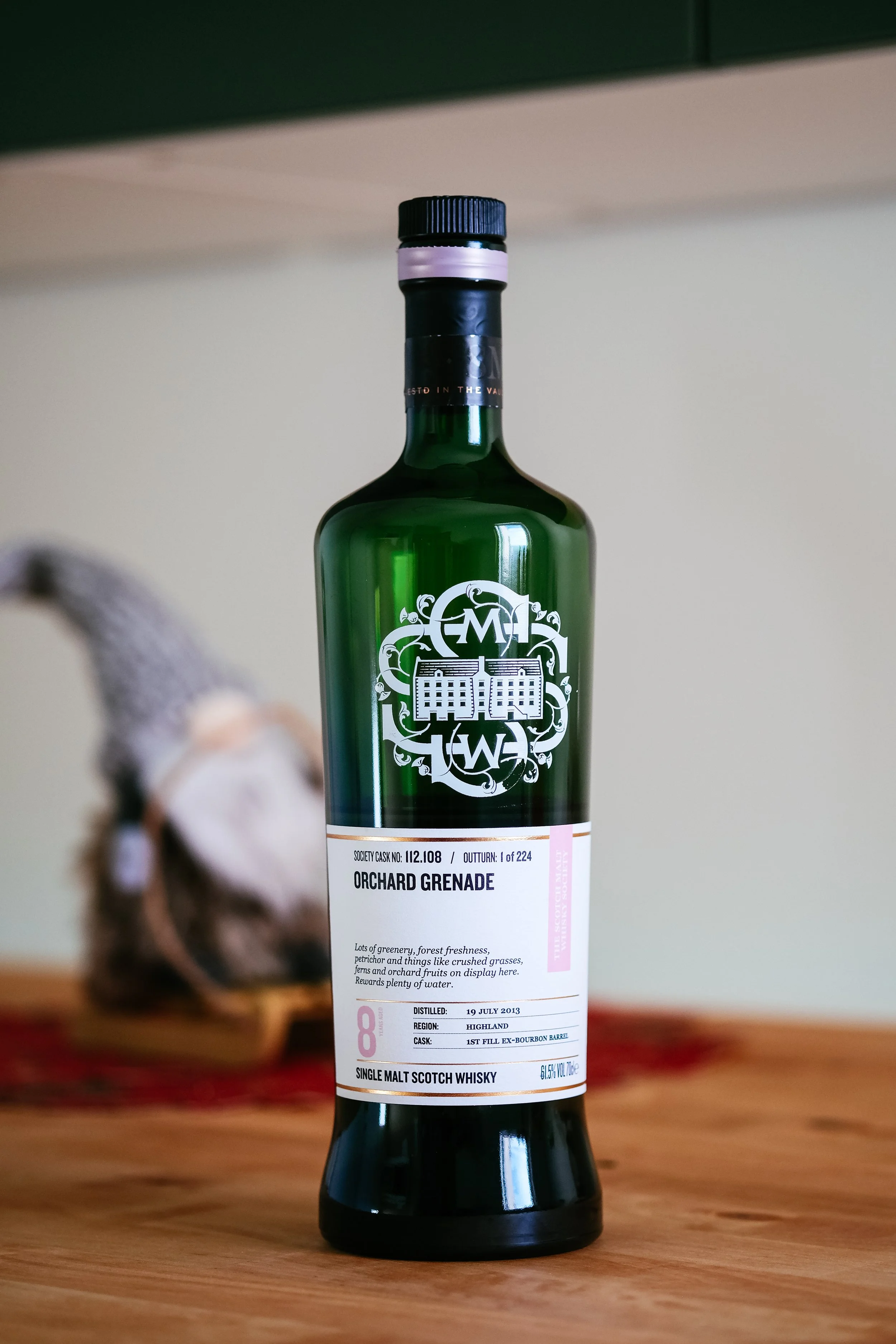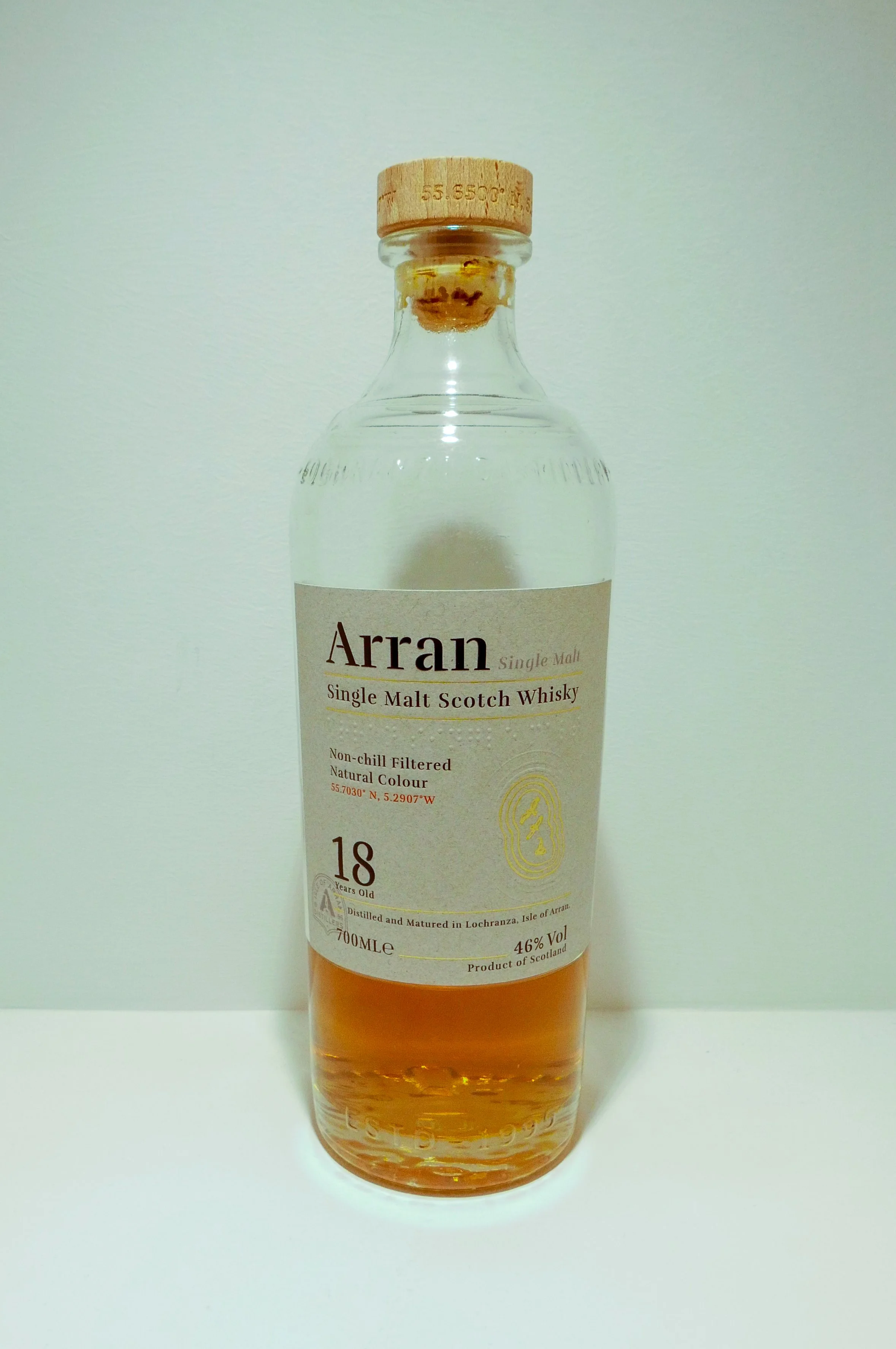Golden Ribbon 1980s Blended Scotch
Vintage vs Modern Comparison | 43% ABV
Score: 5/10
Average. In a good way.
TL;DR
Made greater by comparing to generally awful modern efforts
Usually, sample swaps are good.
Back in May, Coldorak, a pal of mine who runs an excellent whisky blog, reviewed a few of the regular, ubiquitous supermarket blends available here in France. It didn’t go well.
Personally, I've also wanted to review these kinds of whiskies, but never mustered the courage to go and actually buy them. It’s funny how I can justify buying €150 bottles of whisky at auction when I’ve never tasted the liquid, but refrain from spending anything at all on budget whiskies. Some would call it snobbishness, I’d call it common sense. In the end, it’s probably a little of both.
So, sensing a collaborative opportunity - and surprised by some of the brutally low scores - I asked Coldorak if he could send me samples of these cheap blends so that I could share them here. It seems he was all too happy to get rid of some of these, and duly sent me a little box full of not too exciting whisky miniatures - and a few exciting ones as a bonus of course! After I’d sent him a box of the good stuff as well, I was left thinking about how to tackle this ‘review’.
As luck would have it, I snagged this Golden Ribbon old blend a few months ago at auction. I always intended to review it but it never inspired an angle for the write up. However, now that I have these supermarket blends I think it’d make for an interesting comparison, even though not entirely scientific, not the same brand and not traditional Dramface reviews - being samples. But you’re not here for science, you’re here for the curiosity.
When I started diving deeper into whisky, I didn’t understand the high ratings given to old blends by established reviewers such as Serge or Ruben. For me, a blend was a supermarket whisky; something bland and harsh, and that was the way things always had been. But I soon realised that whisky ‘back then’ was made in a very different way. The barley varieties used were different, yeasts were different, cut points, use of peat, still heating system… But most importantly - the market was different.
Up until the eighties, there wasn’t really a market for single malts. Sure, a few distilleries like Glenfiddich or Glenmorangie had already launched their own single malt expressions, but it was a niche thing for sure. Pretty much every whisky drinker was drinking blends.
But, by the late 1970s and early 80s whisky had hit a massive downturn and there weren’t enough whisky drinkers. This meant that in order to sell your blends, they either had to be cheaper than everyone else; achieved through economies of scale, or alternatively being better than everyone else. This was achieved by aging the whiskies a for a bit longer, or increasing the mature malt proportion compared to grain.
Apparently, that’s why blends of yore are so different from those offered today. These days might be tough for single malt brands, but blends still account for massive sales figures the world over, even though the numbers are no longer climbing as much as they might have in the past. That means that in order to satisfy the demand, the average malt proportion in the big brand blends has shrunk, in favour of inexpensive 3yo-plus grain whisky, often from refill casks. Honestly, it wouldn’t surprise me if some of the worst blends I’m about to try had less than 3 or 4% malt content.
While grain whisky isn’t necessarily bad, 3yo grain from a tired cask that was then chill-filtered and had some colour added to it is, most of the time, quite unpalatable to whisky enthusiasts. That and the fact that whisky production in general was made more efficient and less characterful (on average) than it was in the past means that it’s my belief that it’s tough to find a decent entry level blend these days.
I should mention as well that I am in no way a blend snob in general, I do like a well made, enthusiast-geared blended Scotch. I like a Thompson Brothers’ TB/BSW or a Maclean’s Nose, and I own and quite enjoy a bottle of Edinburgh Festival blended Scotch made by J&A Mitchell. If Chivas Regal was 70% malt and bottled at 46%, you bet I’d be first in line to grab a bottle. The point of this review isn’t to pointlessly flog a dead horse; I actually hope to find something good to write about these wee samples.
So, the theory is, this Golden Ribbon should win hands down. Let’s put it to the test now.
Review
Golden Ribbon Blended Scotch Whisky, 70cl, Garthamloch Ltd, Glasgow, Monnier Wiesbaden Import, imported by Wladhaus Am See, believed to be 1980s, 43% ABV
€22 (£18) paid at auction exc. fees
This says “Monnier Import” on the label, as I imagine this was the original European importer for this brand. I couldn’t find any information on a booze distributing company named Monnier though. The name would suggest it was from either France, Belgium, or Switzerland, but no way to check.
There’s a back sticker though which states it was later imported into Switzerland by “Grösste Whisky bar Der Welt, Waldhaus Am See, St Moritz”. That is of course the famous whisky bar at Waldhaus Am See in Saint Moritz, Switzerland, said to harbour one of, if not the most impressive whisky collections in the world.
Despite having no other info on this bottle, that’s what made me place a bid on it; as if these guys deemed it worthy of importing, it probably was good whisky.
I would love to know when this was bottled, or what whiskies likely went into the blend, so if someone reading this knows anything, please enlighten us in the comment section below.
Score: 5/10
Average. In a good way.
TL;DR
Made greater by comparing to generally awful modern efforts
Nose
Spoilers; we’re already miles ahead of what follows. Don’t be mistaken, this isn’t a Brora either, but it smells like whisky. Caramelised apple pie, melted salted butter and brown sugar, ripe banana, and French toast.
With water: Still that American breakfast vibe, it doesn’t change much.
Palate
A delicate, almost fragile mouthfeel, but sweet and malty. This is expressive and flavourful with brioche and salted butter caramel. Freshly cracked pepper on the finish. I’ll guess that added 3% ABV is helping things along massively.
The Dregs
The simple fact that this is a decent whisky is a relief. I almost wanted to give it a 6/10, especially in comparison to what follows, and because of the ridiculously low price I’ve paid at auction, but upon revisiting it I must settle on a very decent 5/10. A high 5 that is.
Score: 5/10
Bonus Reviews
Rather than stop here and tell you that the old-timer was much better than any of the blends shared with me by Coldorak, I thought I’d share all my notes on all of them with you, warts and all.
Here goes…
Mini-Review 1/5 - J&B Rare Blended Scotch, 40% ABV
£24 RRP and generally available everywhere
J&B, initials for Justerini & Brooks, is a brand that belongs to Diageo. Despite the name, there’s nothing rare about it.
Known for its distinctive green bottle and bright yellow label, it is rumoured to contain forty-two(!) different whiskies, including malts from distilleries such as Knockando, Auchroisk, Glen Spey and Strathmill.
Nose
Well, this doesn’t start well. Melted plastic and acetone. Aggressive, young, bad quality pear brandy. Very new make-like.
With water: Someone apparently tried to make a sauce by infusing grass in unripe pear juice and melted bubble wrap.
Palate
Again, new-make like, pear brandy. A fair bit of alcohol burn on the finish. Still this plasticky bit. The finish is long, unfortunately.
The Dregs
I wonder if the new make quality comes from a relatively high proportion of malt, but of poor quality. In any case, this is downright bad whisky. I’m already questioning this whole endeavour.
This would score a theoretical Dramface score of 2/10 - Avoid. With a TL;DR of “You thought Johnnie Walker red was bad”
Mini-Review 2/5 - William Peel Blended Scotch, 40% ABV
£20 RRP and generally available across France
This is a brand you may not be too familiar with, as it is owned and distributed by a French company, Marie Brizard Wines & Spirits. As such, its main market is France. It is typically sold for around 15€ here, and as such I expect nothing grandiose.
Nose
Sugary barley and fake apple flavour. Tart fruit candies. Cardboard then appears and takes the lead. Think wet cardboard on a Parisian pavement after a rain episode.
With water: Dust, a mountain of dust. And dirty socks after a rugby training session. If anyone regularly drinking this was debating adding a few drops of water, don’t.
Palate
Impressively light and insipid. Cardboardy.
With water: Bland, diluted caramel, insipid. Sorry for the reduced vocabulary.
The Dregs
Why anyone in their right mind would drink this is beyond me. This has no purpose other than to get you drunk for cheap.
This would score a theoretical Dramface score of 2/10 - Avoid. With a TL;DR of “So much for the Auld Alliance”
Mini-Review 3/5 - Clan Campbell Blended Scotch, 40% ABV
€18 RRP and generally available across France
The brand has of course nothing to do with the actual Clan Campbell, and was instead created by Pernod-Ricard in 1974. It has recently been sold to Stock Spirits, with a certain Graham Coull appearing on Parisian metro ads. It is one of the most popular Scotch brands in France, and has been for a while. There isn’t real info on the makeup, but one could assume the grain component to mainly be Strathclyde, and the malts coming from the Chivas Brothers portfolio.
Nose
Apple candy and cardboard. Maybe some vanilla extract. Nail polish remover. More cardboard, but not as wet as William Peel.
With water: H2O could have amped the vanilla or apple note, but instead we just get more cardboard.
Palate
Surprisingly fuller bodied than the previous two. Only 40%, but hot and fiery. Malt syrup and cardboard.
With water: add only one drop and this becomes lifeless. Granted it was not in particularly good health before hydration.
The Dregs
The first few seconds of nosing were rather promising compared to the other two, but that went downhill faster than Richard Hammond steering a supercar through the Swiss Alps. Despite this, I think it is still more enjoyable than the previous pours, thanks to those apple and vanilla notes.
This would score a theoretical Dramface score of 3/10 - Disappointing. With a TL;DR of “Drinkable, if you really need to drink”
Mini-Review 4/5 - Label 5 Blended Scotch, 40% ABV
£19 RRP and generally available across France, North Africa, Eastern Europe and Asia
Label 5 is owned by another French company, La Martiniquaise-Bardinet. As such, it is fair to assume it contains a decent portion of Glen Moray for its malt component, as the distillery also belongs to them. This again might be an obscure brand for you UK and US folks, but it is ubiquitous around here, and sells quite well, which, for reasons soon to be explained, is a complete mystery to me.
Nose
I’m afraid I can’t write in English the main thing I smell here. So I’m gonna write it in French and let you translate it: De la merde. It smells like literal merde. Dog merde that’s been dried by the sun. Cat litter in the summer. Foul water.
With water: A dry merde salad with one dried apple slice on top.
Palate
It manages the incredible feat of being both sickly sweet and unbelievably bland. It doesn’t taste like merde though, which is a massive win at this point. The downside is it doesn’t taste like anything really, even with water added.
The Dregs
I swear this wasn’t just a way of getting the S-word past our vigilant editors. I’d much rather not have tasted this travesty of a whisky. I know, there are only two 1/10 reviews on DF, and both are from me. Honestly, this whisky can count itself lucky there isn’t a 0 on our scale. I’m hoping I won’t contract cholera after drinking this.
This would score a theoretical Dramface score of 1/10 - Should not exist. With a TL;DR of “Scatophile whisky”
Mini-Review 5/5 - Ballantine’s Finest Blended Scotch, 40% ABV
£18 RRP and generally available
This is arguably the most famous of all the whiskies reviewed today, as it is the second biggest Blended Scotch whisky brand globally, after JW. You’ll find this for cheap pretty much anywhere in the world.
It belongs to Pernod Ricard, via their Chivas Brothers branch. There is a bit more information on the makeup, with distilleries such as Strathclyde (grain), Miltonduff, Glenburgie and Glentauchers seemingly being part of the recipe.
Nose
Light, inexpressive. A bit plasticky. An old, decrepit hospital corridor. No fruit, no spice, no sweetness. The quietest so far. Bland. This whisky will suck the happiness out of you.
With water: Somewhat better, with distant cooked apples, if I squint my eyes, or rather my nostrils. Uninteresting whisky overall.
Palate
I am physically unable to single out any flavour. All I get is generic brown alcohol.
With water: Yup, alcoholic beverage, which is brown in colour.
The Dregs
They tell us that SWA regulations are supposed to protect the image of Scotch whisky, yet this is allowed to bear the name.
This is arguably the best of the bunch so far, but only because its total lack of aromas and flavours means I can’t detect any foul ones. I wouldn’t be surprised to hear that the malt content in this is lower than 1%.
This would score a theoretical Dramface score of 3/10 - Disappointing. With a TL;DR of “a supermarket frozen pizza without any toppings”
The Final Dregs
Well, I was afraid this recent blend session would feel like comparing the flavour of different animal turds, but I didn’t expect it to turn literal.
To be honest, I was very surprised by the differences in profile among these blends. I assumed that most would feature an enormous proportion of grain and as such might all feel similar, but they don’t. Rather, they collectively manage to all be very different takes on “quite bad”.
In comparison, my Golden Ribbon auction win stole the show. It probably isn’t the best old blend you can get, nor the oldest (it is in a 70cl bottle) but if you can get it for less than £30 at auction, I’d suggest it’s worth the risk. In the end, I’m thankful to have done this tasting.
Hope you enjoyed it. If you did, please remember to check out my pal Coldorak’s take on these blends on his blog More Malts Less Drama.
Today, let’s listen to Hole In The Sky, by Black Sabbath, from their 1975 album Sabotage, in honour of Ozzy’s career. I wish I could have gone to the “Back to the beginning” show!
Merci Coldorak!
Tried these? Share your thoughts in the comments below. AF
-
Dramface is free.
Its fierce independence and community-focused content is funded by that same community. We don’t do ads, sponsorships or paid-for content. If you like what we do you can support us by becoming a Dramface member for the price of a magazine.
However, if you’ve found a particular article valuable, you also have the option to make a direct donation to the writer, here: buy me a dram - you’d make their day. Thank you.
For more on Dramface and our funding read our about page here.
Other opinions on these:
Golden Ribbon:
Whiskybase (5cl only)
J&B Rare:
Whiskybase
More Malts Less Drama
Whisky Wednesday (YouTube 2020)
William Peel:
Whiskybase
More Malts Less Drama
Clan Campbell:
Whiskybase
More Malts Less Drama
Label 5:
Whiskyrant
Whiskybase
More Malts Less Drama
Ballantines:
Whiskybase
Malt-review
More Malts Less Drama
Got a link to a reliable review? Tell us.

